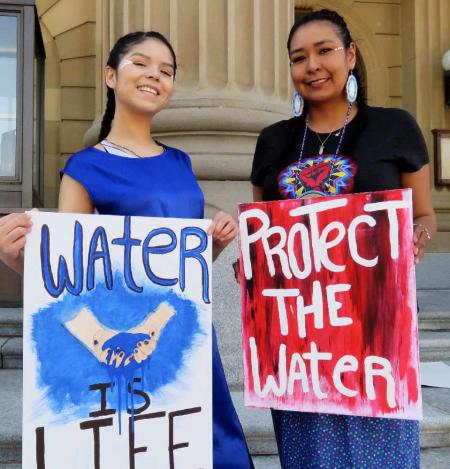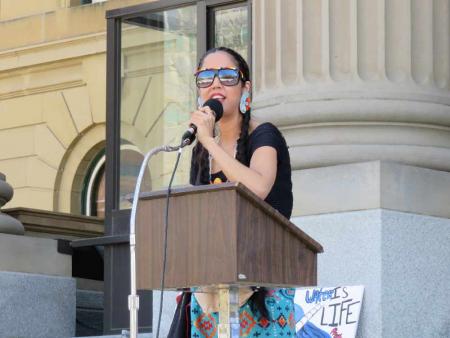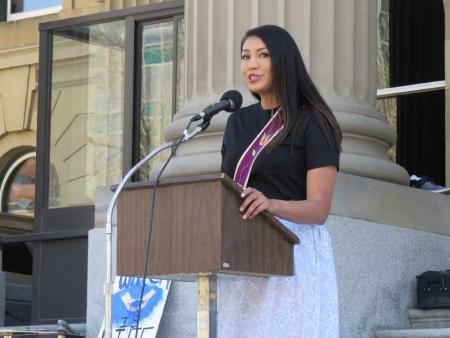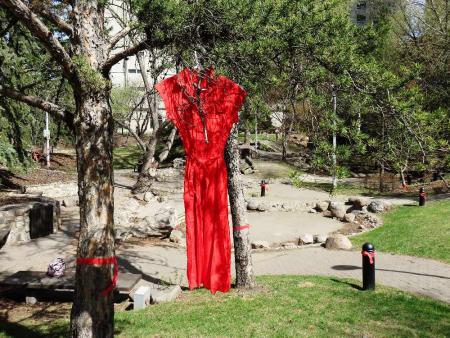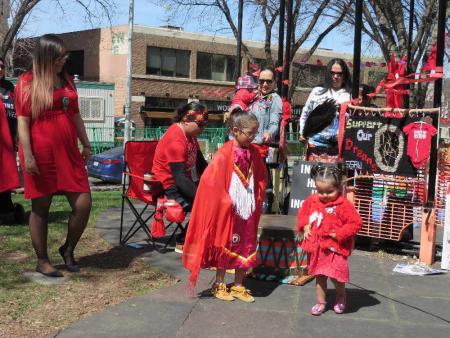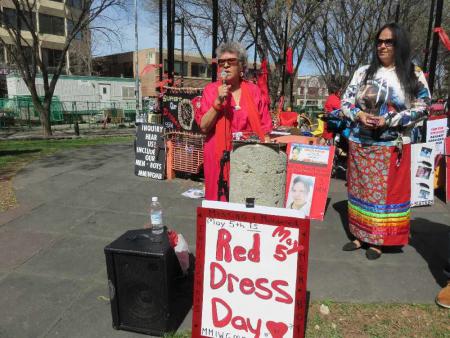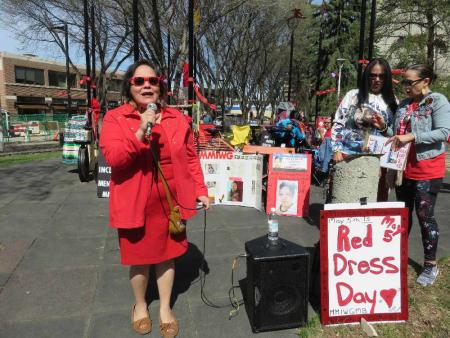Image Caption
{ALBUM_998732}
By Paula E. Kirman
Windspeaker.com Contributor
EDMONTON
On May 6, the Water is Life protest was held at the Alberta Legislature in Edmonton. The protest was the idea of 16-year-old Shaunteya Dase English Eaglechild with support from her aunt Jamie Medicine Crane. Both hail from southern Alberta nations—Kainai and Piikani.
Eaglechild was moved to organize the protest over her concern about the lack of clean drinking water in many Indigenous communities.
“It's an issue that cannot be overlooked,” she said. “There are over 140 communities in Canada that do not have clean water, and for some of these communities it’s been over a decade. The current government made a promise before getting into office to have clean water to these communities. Now they are promising clean water by 2021 (if re-elected).”
The protest featured drummers, speakers, and numerous Indigenous musicians, such as Billy LeBlanc (better known as Rellik) and country singer/songwriter Trent Agecoutay.
Kiera-Dawn Kolson, a Tso'Tine-Gwich'in artist, speaker, and performer said, “Who's to speak for the animals? Who's to speak for the land? Who's to speak for the next seven generations and beyond? That is the responsibility of us all.”
“Every spirit is sacred. When you look at the medicine wheel there are four colors depicted, and if one of those colours is gone that circle will not be gone. We need every spirit to come back to the circle with good hearts and good minds.”
“We are speaking up for our values as Indigenous peoples, and one of those values is protecting Mother Earth. In order for Mother Earth to take care of us, we must take care of her," said Ashley Callingbull from Enoch Cree Nation.
“Water is a life-giver and a life creator, and if we abuse it, if we don't take care of it or don't preserve it, we will ultimately be destroying ourselves. It is terrible that First Nations communities in Canada are living in Third World conditions without having access to clean drinking water.”
Through her activism, Eaglechild is determined to spread the word about the importance of clean water.
“As a country that is seen as a First World country, the Indigenous people continue to suffer in Third World conditions. Water is a necessity. We cannot live our lives without water. Our medicines cannot grow without it. Water is a need. Water is life. And if we use our voices together, we are stronger.”
The weekend in Edmonton saw another social justice demonstration.
Saturday, May 5 was National Red Dress Day, a date that commemorates missing and murdered Indigenous women and girls (#MMIWG) through the display of red dresses in public spaces. Beaver Hills House Park in the downtown area was the location for such a display, as well as an informal gathering held to honour #MMIWG. Organizers chose to include in their tributes missing and murdered Indigenous men and boys.
“We want to show that we have not and will not forget our stolen brothers and sisters,” said organizer Judith Ann Gale, who is Dene/Cree.
“I hope this will help families and survivors with their healing and show them they are not alone, that an entire community supports them and loves them,” said April Wiberg, who is with the group Stolen Sisters and Brothers, which co-organized the event.
“We also hope to bring more awareness of our missing and murdered men and boys, and lastly, to show solidarity and promote compassion and empathy, especially for those who are struggling and living in vulnerability,” Wiberg added.
The location of Beaver Hills House Park was chosen by the organizers because it is a place where vulnerable people gather. Prior to its revitalization, it was considered an unsafe space and Wiberg said several Indigenous people had died there, including Charmaine Desa who was killed on July 25, 1990.
In recent years the park has been renewed with the addition of a sculpture by Métis artist and designer, Destiny Swiderski. Entitled Amiskwacîw Wâskâyhkan Ihâtwin, the Cree name for the park, the sculpture features 152 Waxwings.
Participants occupied the park all afternoon. The program included a prayer ceremony, speakers, and an open mic for family members, supporters, and survivors, while red dresses and other articles of red clothing dangled from trees.


